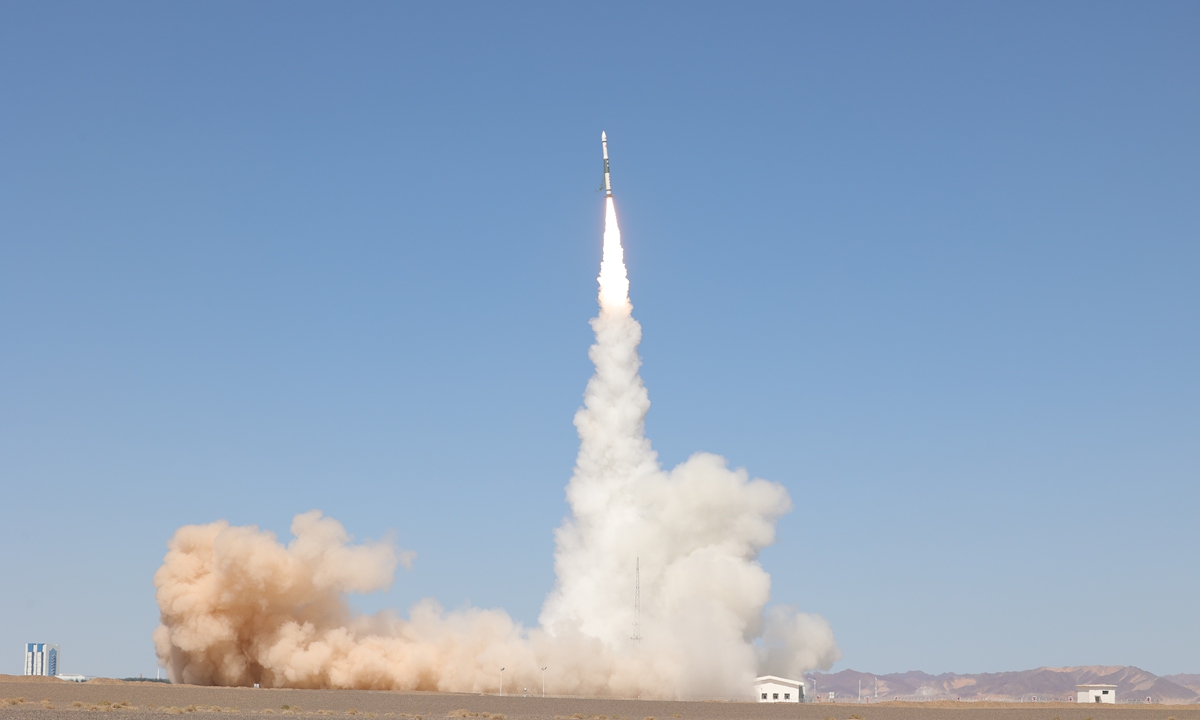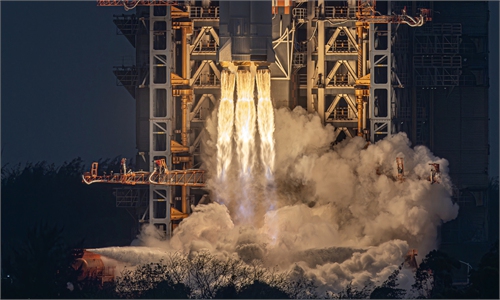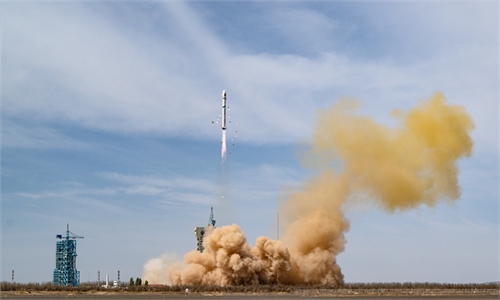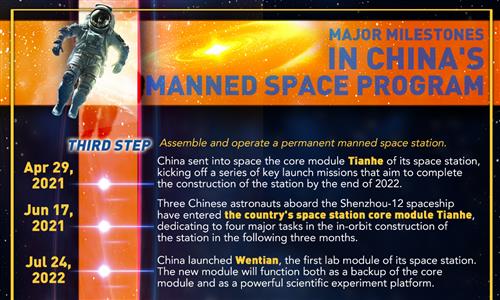China’s Kuaizhou commercial rockets aim 8-10 launches to deploy 30 satellites into orbits in 2024: developer

Photo: Courtesy of Hubei Sanjiang Group, CASIC
China's commercial Kuaizhou rockets aim to carry out eight to 10 orbital launches in 2024, to deploy more than 30 satellites into their designated orbits, Global Times has learned from Hubei Sanjiang Group, a wholly-owned subsidiary of the country's space contractor China Aerospace Science and Industry Corporation (CASIC) and developers of the rockets, on Tuesday.
In an interview on Tuesday, the firm revealed that currently it has commissioned the Kuaizhou-1A and Kuaizhou-11, two types of commercial rockets for the launch missions.
The Kuaizhou rockets have been constantly moving forward on the path of independent innovation. It is currently the solid carrier rocket with the highest number of launches and consecutive successful launches in China. Its reputation as the "gold-medal rocket" is becoming increasingly prominent in the industry, developers said.
The Kuaizhou-1A rocket has completed 26 launches to date, delivering 56 satellites into their designated orbits to date. These satellites include various types such as remote sensing, navigation enhancement, communication, scientific experiments, and more, while the Kuaizhou-11 carried out its maiden flight on December 7, 2022.
The Kuaizhou-1A carrier rocket has the highest number of launches among Chinese rockets and leading network efficiency, according to the developers.
In 2019, it set a record of consecutive launches within six hours at the Taiyuan Satellite Launch Center. From the end of 2023 to the beginning of 2024, four Kuaizhou-1A rockets from the same batch achieved "four launches and four successes" within 18 days.
Thanks to the precise launch of the Kuaizhou rockets, remote sensing satellites can capture high-precision images of Earth from space and conduct meteorological detection. Navigation enhancement satellites enhance the service capabilities of satellite navigation systems in orbit. Communication satellites provide narrowband Internet of Things (IoT) and broadband Internet services. Scientific experiment satellites carry out frontier scientific explorations such as microgravity experiments and new technology verifications in orbit.
These efforts provide integrated solutions for resource integration in the air, space, and on the ground, benefiting various fields such as national land and resource monitoring, mineral resource development, smart city construction, forestry resource survey, ecological environment monitoring, public health emergency response, transportation, and energy and power.
In the latest example to illustrate the high efficiency of the commercial rocket model, from March 22, 2023, to January 5, 2024, the Kuaizhou-1A rockets were launched continuously in groups in a "5 launches, 20 satellites" format, assisting in the basic completion of the Tianmu-1 sun-synchronous orbit constellation within 360 days.
This achievement set the record for the fastest network formation of domestic commercial satellite constellations, according to the rocket developers.
Moreover, In November 2023, the 70-ton reusable liquid oxygen methane engine independently developed by the Kuaizhou rocket research team successfully completed a 200-second full-system long-range hot test.
Shortly thereafter, the Kuaizhou team embarked on another journey, and the engine type successfully completed multiple start-ups, thrust variations, and rated condition hot test assessments, validating multiple technical indicators.
In January 2024, the Kuaizhou reusable technology test rocket successfully completed vertical takeoff and vertical landing (VTVL) tests, achieving a new breakthrough.
The Kuaizhou Rocket Industrial Park was established in Wuhan National Aerospace Industry Base in the capital city of Central China's Hubei Province, officially starting production.
The industrial park has solid and liquid carrier rocket core test capabilities and an annual assembly and testing capacity of 20 to 50 carrier rockets.
The development drives more and more companies to join the aerospace launch supply chain system, promotes mission coordination, attracting many upstream and downstream enterprises in the aerospace industry chain to settle in the Wuhan National Aerospace Industry Base, the Sanjiang Group revealed.




